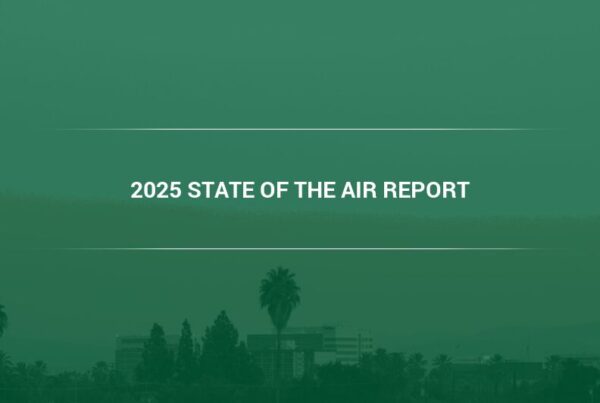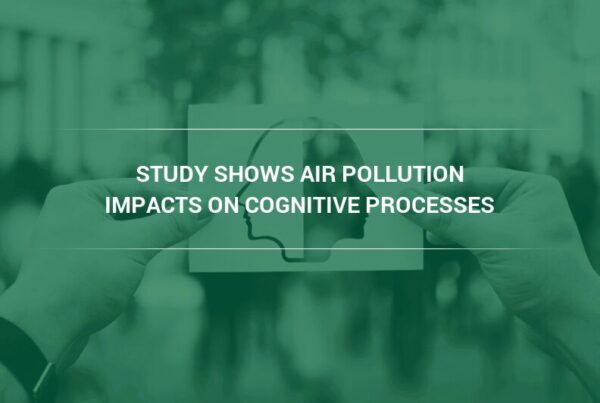Many people think that air pollution is only in a hazard where it originates. However, in truth air pollution can travel around the world to harm people far away from its point of origin. The traveling of air pollution around the world means that the most prolific polluters can harm the health of people in areas which don’t pollute to the same extent. For this reason, it is important that all available methods of limiting air pollution be employed, as it protects not only the health of people immediately surrounding the source of pollution but people all around the world.
Air Pollutants Which Travel
The air pollutants which travel include particulate matter, ozone, nitrogen oxide, and sulfur dioxide.
“Particulate matter, frequently referred to as particle pollution, is made out of tiny liquid or solid particles in the air. These air particles can get into people’s lungs and bloodstream, due to their small size,” explains Camfil’s Charlie Seyffer, Manager of Marketing & Technical Materials and 37-year ASHRAE member and active committee participant. “They can even ride the bloodstream up to the brain and cause brain damage. These particles are categorized as either PM10, which refers to particles 10 µm or smaller (smaller than the width of human hair), and PM2.5 which reflects particles that are 2.5 µm in size or smaller. Particulate matter pollution is one of the most dangerous types of pollution, and the World Health Organization says that levels of PM2.5 should be limited to 10 mcg/m³ or less.” (1)
Ozone is also a common air pollutant that can travel to other areas. Ozone is created through the interaction of Volatile Organic Compounds (VOCs) with sunlight and heat. Ground-level ozone can do damage to people’s lungs, exacerbating conditions like asthma. Ground level ozone also contributes to the greenhouse effect.
Sulfur dioxide is commonly released by industrial processes, and it can exacerbate or cause asthma. It can also cause acid rain, which damages fragile ecosystems. Nitrogen dioxide is frequently released by the burning of fossil fuels, with cars being one of the primary sources. Nitrogen dioxide exposure can lead to hospital admissions through the aggravation of pre-existing respiratory conditions, and it can increase susceptibility to respiratory ailments in general. It also contributes to both acid rain and smog.
How Air Pollution Travels And Disburses
Research on how air pollution travels and disburses around the world has shown that air pollution from one source can affect areas across entire oceans. Air pollution is distributed largely by air patterns and wind cycles around the world, but precipitation and transportation of food can also distribute it.
Research published by the journal Nature Geoscience has found that ozone, particulate matter, nitrogen dioxide, and sulfur dioxide pollution from China has been making its way to the west coast of the United States. China is a massive source of pollution, increasing ozone levels within the troposphere by approximately 7% between 2005 and 2010.
“Due to the westerly winds, much of this air pollution finds its way across the Pacific to the West Coast of the U.S.,” says Seyffer. “So much air pollution has come from China that it has increased ozone pollution on the West Coast by about 43%, despite recent efforts to cut down air pollution by western states.” (2)
“Air pollutants like sulfur dioxide and nitrogen oxides can also be spread across the globe due to precipitation,” continues Seyffer. “These acidic gases can easily rise into the sky where they will mix with clouds, and these clouds move across national borders to other areas of the world where they deposit these acids through precipitation.” (3)
Another concern is the pollution which results from heavy metal air pollution, like particles of lead and mercury in the air. These persistent pollutants can accumulate on land or in bodies of water where they can be consumed by plants, fish or other animals. These polluted food sources can then be transported to other regions of the world where other people will ingest the tainted food supplies.
How to Prevent the Traveling of Air Pollution Around the World
Efforts to prevent the traveling of air pollution around the world should focus primarily on the largest polluters. The biggest sources of pollution naturally distribute the most pollution to other areas of the globe, so cleaning up areas with heavy pollution will clean up other areas as well.
Special attention should be paid to countries which are rapidly developing and industrializing, as developing regions of the world often have fewer regulations regarding air pollution. Rapidly industrializing countries such as China and India are amongst the biggest polluters, as their economies and populations are swiftly growing, but without the necessary regulations and technological innovation to limit air pollution.
Different pollution control strategies should be implemented alongside one another for maximum effect. Source control, technological invasion, and economic incentives can all be combined to reduce air pollution.
“Source control involves tackling pollution from the source, by using cleaner fuel sources and improving the efficiency of industrial processes to reduce the number of pollutants emitted,” says Camfil’s Seyffer. “Regulation is often an effective method of source control, by instituting limits on the number of pollutants an industry can release. This can be combined with economic incentives like cap and trade programs to further reduce air pollution levels.” (4)
Source control, regulation, and economic incentives can all be backed by technological innovation. The creation of alternative energy sources such as solar power, wind power, and hydropower can greatly reduce levels of air pollution. This has been seen in China which is aggressively pursuing the development of solar power and has managed to make substantial reductions in the air pollution levels of some of its provinces.
Investing in alternative energy sources for transportation is one of the best ways to combat air pollution, as the combustion of fossil fuels to power cars is the primary source of many air pollutants. Things like emissions capture devices and air scrubbers can also be employed to reduce emissions from industrial processes.
The traveling of air pollution around the world means you can be harmed by air pollutants, even if your local community doesn’t produce many pollutants. This is why it’s important to be vigilant about air pollutants. You should take precautions in your buildings, making sure that your HVAC system uses high-efficiency air filtration, the type that controls particulates and possibly the type that controls ozone and other gases. Camfil USA Air Filter Company can give you information on the air pollutants that can harm you, and provide you with filters to protect your health, so contact Camfil USA now.
SOURCES
- http://www.cnn.com/2016/09/27/health/air-pollution-map-who/index.html
- https://thinkprogress.org/chinas-air-pollution-is-traveling-to-the-united-states-e28f584cbb06/
- https://www.smithsonianmag.com/science-nature/air-pollution-china-is-spreading-across-pacific-us-180949395/
- https://www.epa.gov/air-quality-management-process/managing-air-quality-control-strategies-achieve-air-pollution



